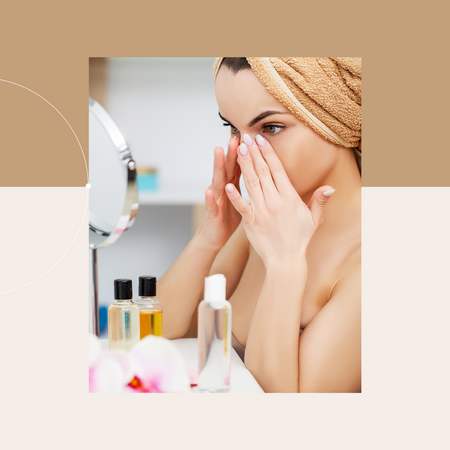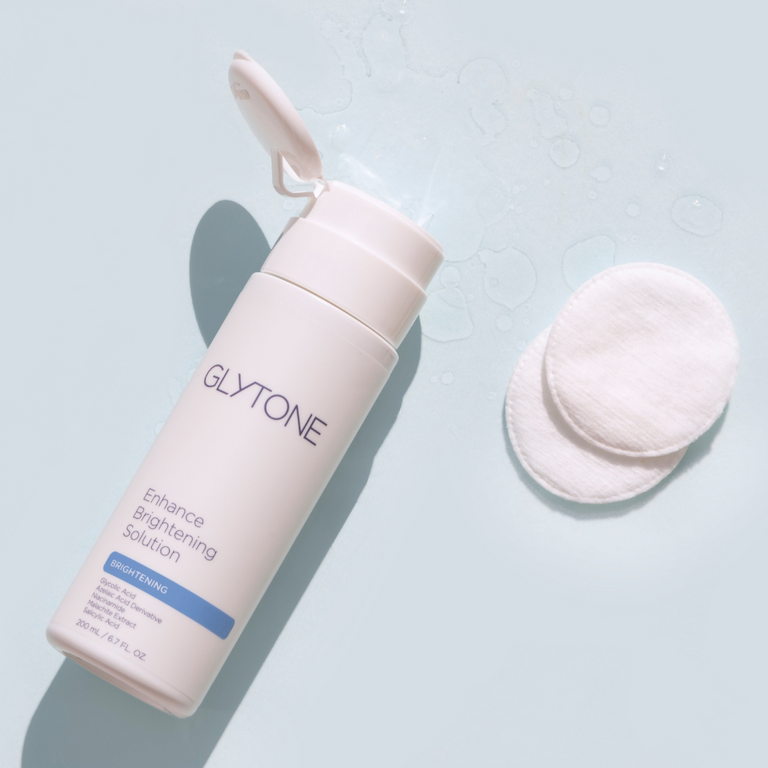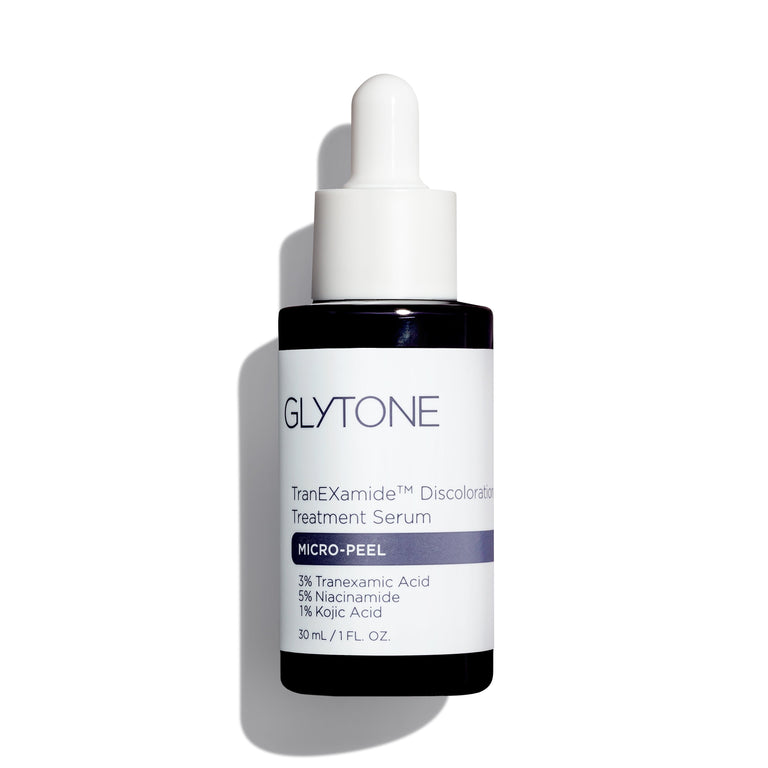Choosing a skincare routine is hard at the best of times as there are hundreds of products out there to choose from which all do something different. But if you have a specific concern, it can be even harder to know what’s best for your skin.
That’s where we come in. Here at Face Dr, we’ve treated hundreds of clients and have decades of experience as skincare experts, so we know a thing or two about skincare routines. And in this blog post, we’re going to break down skincare for those with hyperpigmentation.
Many of us experience hyperpigmentation at some point in our lives. This is the name for dark spots and discolouration which look darker than the rest of your skin tone.
While there are plenty of in-clinic procedures and professional treatments you can look into, there are also steps you can take at home in your daily skincare routine to help prevent discolouration and lighten existing dark spots.
Before we get started, it’s helpful to know exactly what is going on behind those dark spots.
What is hyperpigmentation?
Hyperpigmentation is a common and harmless skin condition where excess melanin, the pigment which gives skin its colour, is produced forming dark spots and patches on the surface of the skin. These can be found anywhere on the body and are caused by three main reasons:
- Sun exposure
- Hormones
- Inflammation
Even though it’s totally harmless, many of us strive for an even skin tone and look for ways to lighten these discoloured patches. Luckily, there are plenty of products you can include within your daily skincare routine to tackle dark spots and stop more from forming.
How exactly do you decide your skincare routine for hyperpigmentation?

By hyperpigmentation type
Skincare routines will look similar for all types of hyperpigmentation as they all have the same cause—excess melanin. But a few differences include:
For sunspots, it’s even more important to wear sunscreen as sun exposure is the root cause. Also, targeted spot treatments are useful to be able to apply strong products directly to the small dark spots.
This type of hyperpigmentation is caused by hormones and often appears as larger brown patches, so skincare routines for melasma may include serums to target overall discolouration and large patches.
If you have post-inflammatory hyperpigmentation, you need to be careful to not irritate the skin and make it react or breakout, which could cause more inflammation and therefore more hyperpigmentation. You can avoid this by patch testing and using products designed with acne-prone skin or sensitive skin in mind if you have them.
By skin type
As with any skincare routine, it’s important to think about what skin type you have and buy accordingly.
If you have dry skin, it might look flaky or feel tight after cleansing. Look out for a cream cleanser to remove make-up without drying out the skin, an alcohol-free toner, thick cream moisturiser and oil-based serum. As for ingredients, hyaluronic acid is hydrating but avoid hydroquinone which could irritate the skin and make it even dryer.
If you have combination skin you’ll have oily areas, like your T-zone, and dry areas, like your cheeks. Try a light lotion moisturiser and balancing toner and look out for salicylic acid in the ingredients list which can help to control oiliness.
If you have oily skin, you’ll have excess oil and a shinier appearance. Try foaming cleansers to remove excess oil, light gel moisturisers and water-based serums. Salicylic acid also works well with oily skin.
By Fitzpatrick skin type
Fitzpatrick skin type is the measurement of how much melanin you have in your skin and how it reacts to sunlight, such as whether you burn or tan easily, so it’s key in deciding a skincare routine for hyperpigmentation.
On the lower end of the scale, Fitzpatrick skin types one and two are the fairer skin types which burn easily, rarely tan and get freckles and sunspots very easily. They usually respond well to most products but can be sensitive so be sure to do a patch test first.
In the middle, Fitzpatrick skin types 3 and 4 have medium skin tones and tan more easily, but can still burn. They can respond well to all types of treatments but especially chemical peels and chemical exfoliators.
On the higher end of the scale, Fitzpatrick 5 and 6, have dark skin tones, rarely ever burn and are more prone to post-inflammatory hyperpigmentation than sunspots. People with this skin type should beware of harsh chemicals which can cause post-inflammatory hyperpigmentation. Instead opt for lightening serums, spot treatments and mild exfoliators.

By budget
Budget is obviously a deciding factor in which products you choose but it can also impact which steps you follow. If you’re working on a lower budget, it’s often better to buy fewer products but higher quality over more products which aren’t as good.
Consider skipping the toner and using a generic, but high-quality, cleanser and moisturiser. Instead, invest in a good serum or spot treatment to target dark spots and, of course, don’t skip sunscreen. A sunscreen with at least SPF 30 that’s broad spectrum will go a long way to helping prevent hyperpigmentation from getting worse and new discolouration from forming.
With a skincare consultation
The easiest and best way to decide what your skincare routine should be is by speaking with a professional. With a skincare consultation, an expert will analyse your skin, including your skin type, skin tone and hyperpigmentation concerns, and recommend exactly what products to use.
Here at Face Dr, we offer free online consultations. Our skin experts, some of whom have over a decade of experience, can make a plan based on your skin and their professional knowledge. There’s no obligation, but if you decide to go with our recommendations, we’ll send them out to you for free, so you can start your new targeted skincare routine straight away.
What to include in a skincare routine for hyperpigmentation

Daily:
The first step in any skincare routine is cleanser. Use a gentle cleanser to clean your skin in the morning and evening. If you wear a lot of make-up you may need to double cleanse twice at night. While a general cleanser will do the job, consider investing in a cleanser which includes ingredients to target hyperpigmentation.
Once your face is clean, it’s time to tone. Toners are an optional extra that, if your cleanser is high-quality and you’d rather keep your routine minimal, you may not need. However, it can be a useful step to balance the skin’s pH and add ingredients which help with hyperpigmentation. As with cleanser, you can opt for a general toner for your skin type or choose one which targets hyperpigmentation.
Once you’ve cleansed and toned, add a serum or treatment before your moisturiser. This is when it’s the most beneficial to choose a product that’s designed with hyperpigmentation in mind.
Ingredients like vitamin C, kojic acid and glycolic acid are great for promoting exfoliation and reducing melanin and therefore dark spots. You can buy serums to use over the entire face or spot treatments which are designed to be applied directly to the dark patch.
Finally, it’s time to moisturise to hydrate the skin and lock in all those ingredients. You can use the same moisturiser morning and night but there are some benefits for opting for a separate day and night cream. Look for a day cream with antioxidants and an SPF and a night cream that’s thicker to rebuild your skin while you sleep.
And while moisturisers are popular, there’s growing evidence that they may not be needed by everyone. So, depending on your skin type, this could be a step your skin doesn’t need. The easiest way to find out if your skin could benefit from a moisturiser is by speaking with an expert.
The final step on your daily skincare routine, at least in the morning, is sunscreen. This is the key to preventing new hyperpigmentation from forming and making sure existing dark spots don’t get any darker. Opt for a sunscreen with SPF 30 to 50 that’s broad spectrum to protect against both UVA and UVB rays.
Weekly:
Depending on your skin type and how strong of an exfoliator you’re using, this may not be a daily step but instead something you include once or twice a week. Exfoliating is important for treating hyperpigmentation as it removes dead cells, which are often the discoloured ones, and reveals lighter and brighter skin beneath.
You can choose between a manual exfoliator which uses small particles to scrub away dead skin cells or a chemical exfoliator which uses acids to dissolve the bonds between dead skin cells. Acids and chemicals usually work best for dark spots as they can penetrate into deeper layers of the skin.
What to avoid
Especially for darker skin tones and those with sensitive skin, be sure to patch test any products with new ingredients your skin isn’t used to. Reactions can cause post-inflammatory hyperpigmentation, especially making the problem you’re trying to solve worse.
There are ingredients out there which make your skin even more sensitive to the sun, therefore causing more melanin to be produced and more dark spots to appear. However, many of these ingredients—which include AHAs, retinol and hydroquinone—can also help decrease existing dark spots by blocking melanin production. Avoid these if you’re out in the sun a lot and, if you do use them, be sure to use a high-quality sunscreen and avoid excess sun exposure.
Speaking of hydroquinone, this may be an ingredient some skin types should avoid. It’s used in many products and is perfectly safe for many people and effective at lightening dark spots. However, in some, it can cause a reaction and leave behind post-inflammatory hyperpigmentation. Dry and sensitive skin types and those with darker skin tones should speak to an expert before trying hydroquinone.
Ready to get started?

And there you have it, we’ve revealed how exactly you can build a skincare routine with hyperpigmentation in mind.
But, if you’re looking for professional advice to make the best decision for your skin, you can book a free online skincare consultation with our skin experts. Here at Face Dr, we’ve got decades of experience treating hyperpigmentation and the latest knowledge on skincare routines, so we can help you build the best one for you.
One of our experts will analyse your skin and ask about your concerns over a 30-minute video call. They’ll then be able to recommend the best ingredients, products and routine to follow to tackle hyperpigmentation. Plus, if you have any other skincare concerns—like acne, ageing or dull skin—they’ll be able to tailor recommendations to tackle these too.





